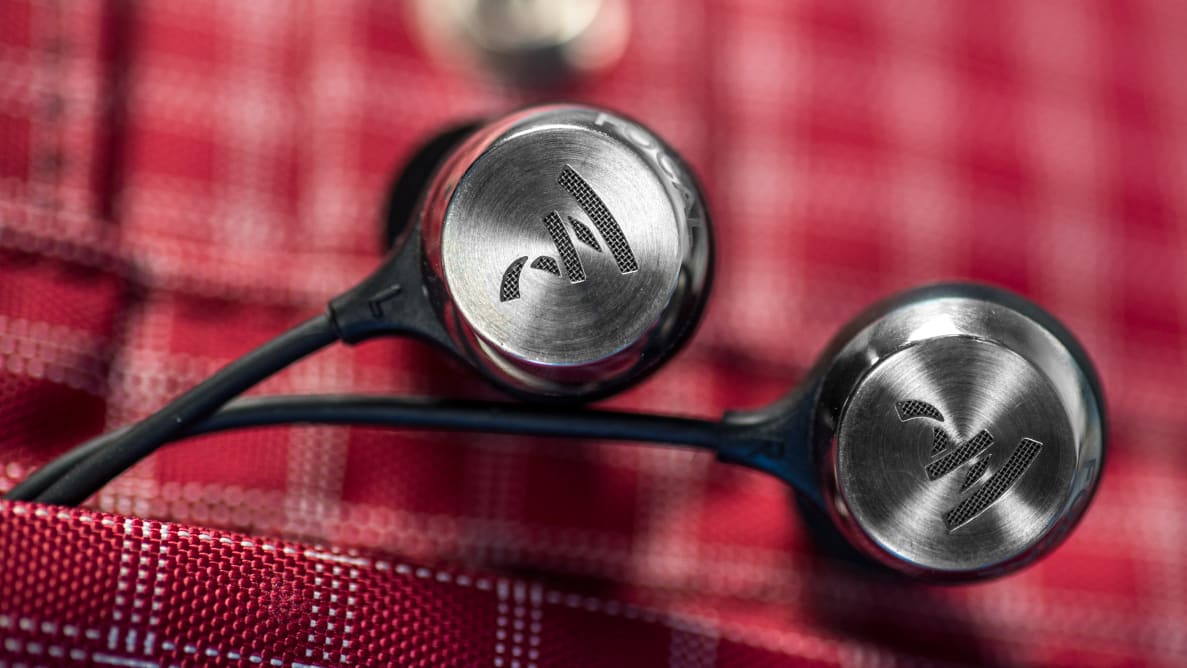Pros
Cons
At least, until now. Famed for their loudspeaker systems in particular, Focal now is making a splash in the headphone industry. With its first premium in-ear model, the Sphear ($179.99 MSRP).
With excellent sound quality and a beautiful design, the Sphear in-ears show Focal is onto something. But for $180, the Sphears need to be damn near perfect. While these are a very polished first effort, we have doubts about the return on investment.
The Looks
Brushed metal, black plastic
The design of the Sphear is pretty straightforward: lightweight black plastic encases the 10.8mm dynamic drivers, and the solder points are protected by a protective ring of rubber that circles the earbud. It makes a fetching first impression, with a sleek brushed metal backing with a cutout Focal logo exposing a fine mesh. These are definitely lookers.
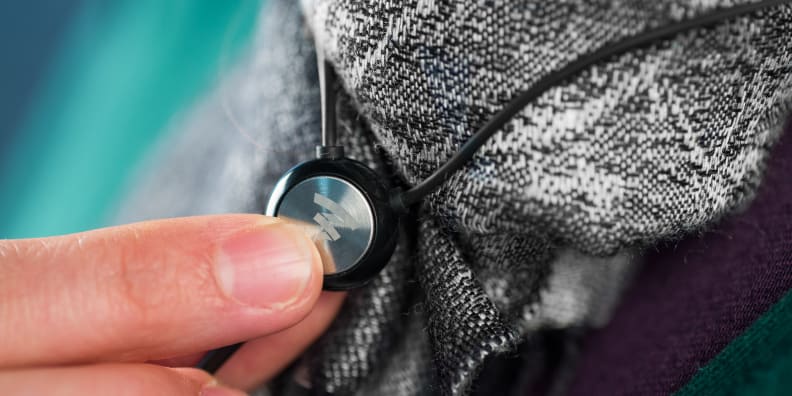
A remote lives on the cable split.
{{amazon name="Comply Tx-200 Isolation PLUS Foam Earphone Tips (Black, 3 Pairs, S/M/L)", asin="B004HKIAJC", align="right"}}There isn't a ton of metal in the Sphears' housing, so they're very light. That's great if you're worried about suffering excess pressure on a delicate area. The cord is quite slender, and the inline controls also don't add in a ton of weight either, so the Sphears sidestep many common problems exhibited by many in-ears.
However, that does mean there are a few tradeoffs. Because the wire isn't replaceable, and the internal solder points are tiny, you may end up breaking your expensive in-ears if you don't treat them with care. To keep that from happening, we recommend using the included carrying case. Additionally, don't ever yank them out of your ears by the cable—it's the quickest way to wreck any earbud.
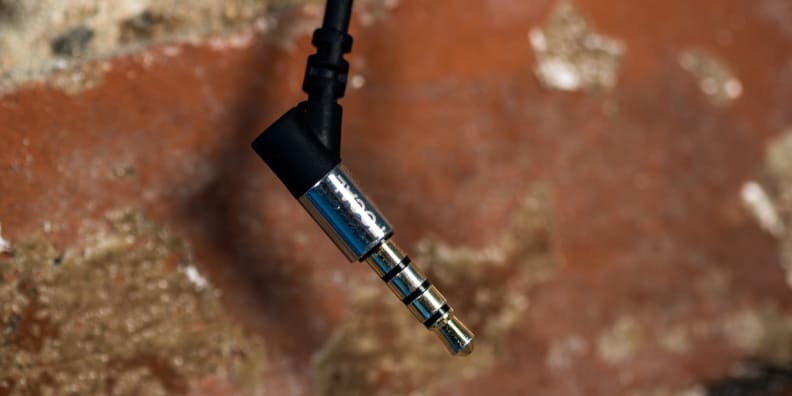
A standard 1/8th inch plug is flexible and sturdy.
I will say that where the cable is a little vulnerable where it meets the earbud, it's well-protected at the 1/8th inch plug. A combination of rubber and metal means you're unlikely to shear or bend the wire in a way it's not supposed to go. You'd think that would be a bit of a no-brainer, but many of the in-ears you see out and about often break at that point.
Included in the packaging is an airplane adapter, as well as several silicone and foam tips. I gotta say, memory foam tips feel great and block out a ton of outside noise, so having those included in the packaging is an excellent thing to have. However, you can't just jam them in and expect them to hold: grab one size up from what you think you need, roll them in between your thumb and forefinger to compress the foam a bit, then place them in your ears, and hold until the foam expands to fit your ear canal. After that's done, you'll have a near-perfect seal every time you listen. Lots of enthusiasts will grab Comply foam tips off the internet to replace their silicone sleeves anyway, so this is a great addition.
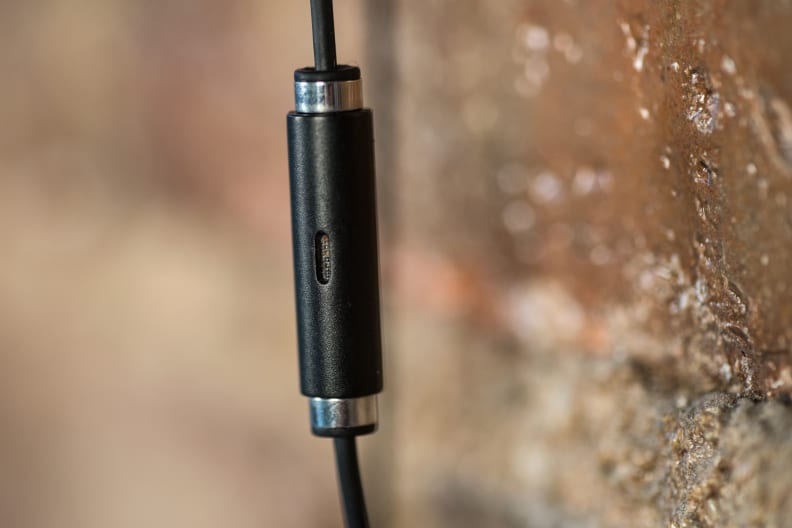
A mic for phone calls hangs from the left earbud.
The Sphear features an in-line remote with a somewhat strange design. That round cable split isn't just some superfluous piece of plastic: it's a button that can answer calls, play/pause, or skip tracks based on how many times you press it in quick succession. It's fully compatible with Windows phones, iPhones, and Android devices— a feat greatly appreciated in our office.
The Sound
Consumer sound without overwhelming bass
As with all in-ears, any discussion about sound quality begins with getting a perfect fit, so we recommend the memory foam tips. There are certain things that almost all in-ears do very well—low distortion, low sound leakage, and high isolation—but the Sphears only check two of those boxes.
For in-ears, this model leaks sound into the wild a bit more than most, and I caution you to keep the volume in check if you buy the Sphears. If you listen at your desk, your coworkers might catch a faint waft of your music every so often, but it'll get completely drowned out if someone is talking near you.
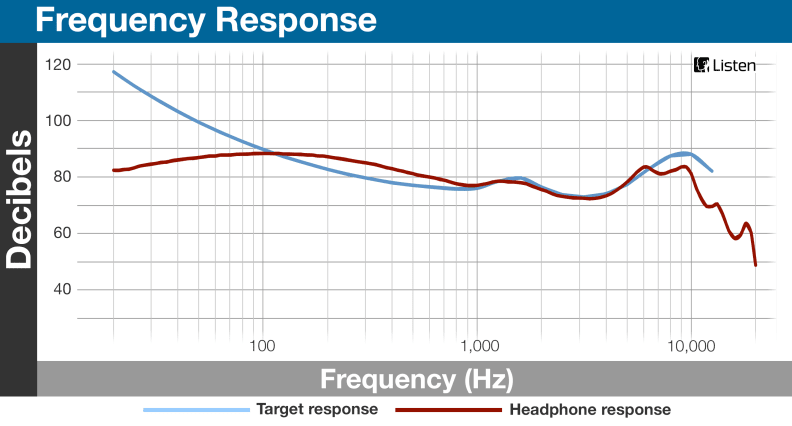
The Sphear targets ISO226:2003, but is a little light on the bass.
Testing revealed a very consumer-oriented sound, and they fit pretty well along market standards for headphones. Again, it's absolutely critical to get a good fit before you listen. If you don't, you'll notice a profound drop in bass emphasis, and it's hard to miss. Stick with the foam tips and you should be fine, but you may have to try going up a size before finding one that fits you.
Even with a great seal, we found that bass takes a bit of a backseat to cymbals, shimmers, and other shrill sounds because low frequency notes are emphasized less than you'd expect. It's fine for most, but it becomes much more pronounced when you listen out in public or at the gym—settings where low-frequency noise tends to mask your music a bit.
{{spotify 'https://play.spotify.com/track/1pWcwCBnN5dVSXvosxoGj3'}}
For example, were you to listen to music that has a lot of rumble or kick drums in them, there's a greater likelihood that they'll sound a little off at low volumes because 100Hz-1kHz are comparatively louder. However, most stringed instruments will be well represented. Pop music has lots of this, so barring a few situations like listening to movies or the odd song with super low rumbles you shouldn't find much fault with the Sphears. However, if a 5-string or drop-D bass comes into play, you'll notice that lingering notes often disappear in the cacophony of music, leading to a slight tinny sound. For example, the lower bassline and some drums in Macklemore's music takes a backseat to the vocals, claps, and background samples in the player above.
Were you to switch it up and watch a movie, you'd notice that rumbles, kettle drums, and explosions won't have the same sort of impact or presence in your listening. But that's if and only if you don't get a good seal. This makes any of the new Batman movies sound a little less rattling than they would in a theater—but that might not be so bad if you feel those flicks get a little too carried away with bass.
{{spotify 'https://play.spotify.com/track/3r3fWKSW1Vh71iXtDNpNbc'}}
In general, though, most of your music will sound just as it should: free of audible distortion or channel balance errors. There's only so much you can ask of headphones, and the rest is up to personal taste.
The Bottom Line
For a first foray into the world of high-end in-ears, the Focal Sphears clearly mean business. That said, at $180 they are probably beyond what most shoppers are looking for in a pair of in-ears. Instead, we feel that they'll primarily appeal to enthusiasts who want "the Focal sound" in a portable form factor.
And if that's what you're looking for, we don't think they'll disappoint. As far as in-ears go, these are very comfortable, frustration-free, and the memory foam tips are a killer addition—one too often overlooked in the industry. They don't seem like the most durable 'buds we've ever used, but if you take proper care of them they should last long enough.

These are great headphones to veg out with.
But in a wildly saturated market, there are just so many competing models that sound just as good (if not better) that cost less. So if you're just looking for a good set of in-ears, you'll probably be perfectly happy with one of the many alternatives. For example, the Marshall Mode EQ are also comfortable, sound great, and have customizable sound profiles to let you tweak the output to your liking. If you're in need of more bass or isolation, the Decibullz Contour can be custom molded to fit your ears, while the Bowers and Wilkins C5 series 2, JLab Audio Epic In-ears, and JBL Synchros Reflect all fit the bill just fine.
And if you're just looking for a nice pair of in-ears for the gym, then I strongly recommend either getting something inexpensive, wireless, or near-indestructible instead. The Sphears are great, but they're simply not cut out for that job—and $180 is a lot to blow for something that won't survive long if you have a highly active lifestyle.
Of course, time marches on, and if you can find these on sale for around $120 then by all means pull the trigger. Either way, Focal has clearly shown that it knows how to make a great pair of headphones, and we can't wait to see what they come up with next.
The Insides That Count
All in all, the Focal Sphear in-ears are very decent performers, but they are a little light on the bass. This is usually fine if you're gunning for a more studio response, but the wild swings in emphasis in the higher notes means more sibilant sounds take center stage.
Thankfully, this is the worst of the Sphears' problems.
Frequency Response
Like many consumer headphones, the Focal Sphear more or less follows the ISO226:2003 tuning standard that more or less emphasizes notes to mirror how most humans hear the world around them. While this probably isn't going to be what audiophiles with crazy setups will prefer, there's a lot to be said for a consumer-friendly sound.

The Sphear targets ISO226:2003, but is a little light on the bass.
The biggest fault here is that in the presence of peaks in the highest notes and a general overemphasis from 100Hz-1kHz, bassy sounds below 100Hz will sound very faint in the presence of other music. It's a very common thing, but something to be aware of.
If you have an app that can equalize your tunes, try lowering the volume of 200Hz-700Hz and maybe notch down 4-7kHz a bit and see how that works for you.
Distortion
Distortion is under our tolerance line, meaning you are extremely unlikely to hear any garbage noise in your music. There are some legitiamte nits to pick with the performance of the Sphears, but distortion isn't one of them.
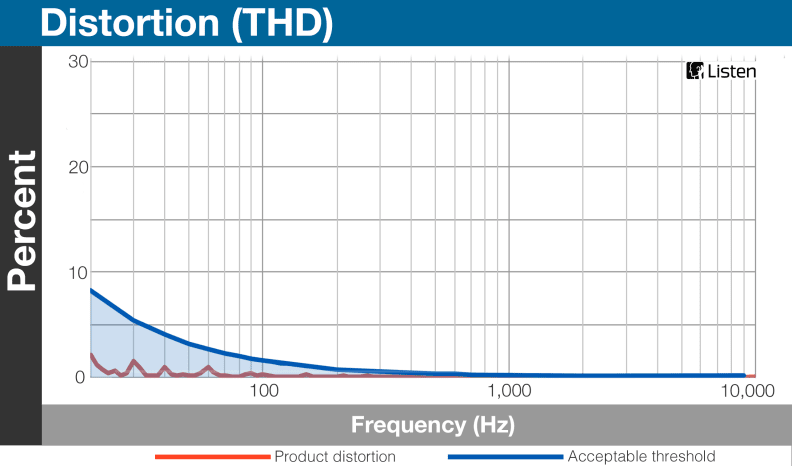
No audible distortion to speak of with these in-ears.
This is as clean a chart as it gets, so you've got nothing to worry about here. If you do hear any distortion, it was likely added by whoever mixed the track, or it's a manufacturing defect specific to that particular copy.
Passive Isolation
Isolation is generally decent, but on the lower end of what in-ears are capable. Considering that still reduces outside noise by over half, and high-pitched sounds by up to 7/8ths, that's nothing to turn up your nose at.
Though your results will vary based on what tips you use, if you stick with the foam tips you'll get the best results. You probably won't net much better results by buying alternative sleeves, so keep that extra dough in your pocket if you do pick up the Sphears.
Tracking
There really aren't any channel balance issues to speak of, at least not audible ones. Though the channel balance peeks over our tolerance into the left channel for the lowest of the low sounds, given their general underemphasis it's not too worrying. You won't hear it unless you're specifically looking for it.
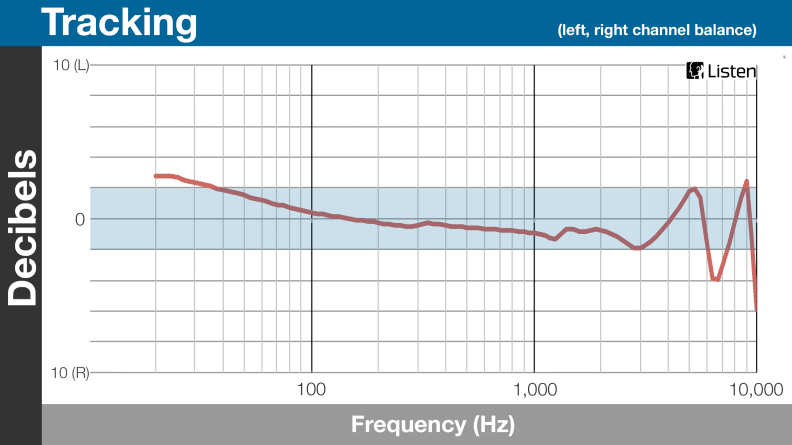
Channel balance errors are only very slightly audible at worst.
Meet the tester
A seasoned writer and professional photographer, Chris reviews cameras, headphones, smartphones, laptops, and lenses. Educated in Political Science and Linguistics, Chris can often be found building a robot army, snowboarding, or getting ink.
Checking our work.
Our team is here to help you buy the best stuff and love what you own. Our writers, editors, and experts obsess over the products we cover to make sure you're confident and satisfied. Have a different opinion about something we recommend? Email us and we'll compare notes.
Shoot us an email